Install the app
How to install the app on iOS
Follow along with the video below to see how to install our site as a web app on your home screen.
Note: This feature may not be available in some browsers.
You are using an out of date browser. It may not display this or other websites correctly.
You should upgrade or use an alternative browser.
You should upgrade or use an alternative browser.
Jahas, tätäkään ei ole tullut uutisissa vastaan vaikka tiktok on teinien pääasiallinen ajanviettotapa.
U.S. Blacklists Eight Chinese Tech Companies on Rights Violations
The Trump administration placed eight Chinese technology giants on a U.S. blacklist on Monday, accusing them of being implicated in human rights violations against Muslim minorities in the country’s far-western region of Xinjiang.
The companies include two video surveillance companies -- Hangzhou Hikvision Digital Technology Co. and Zhejiang Dahua Technology Co. -- that by some accounts control as much as a third of the global market for video surveillance and have cameras all over the world.
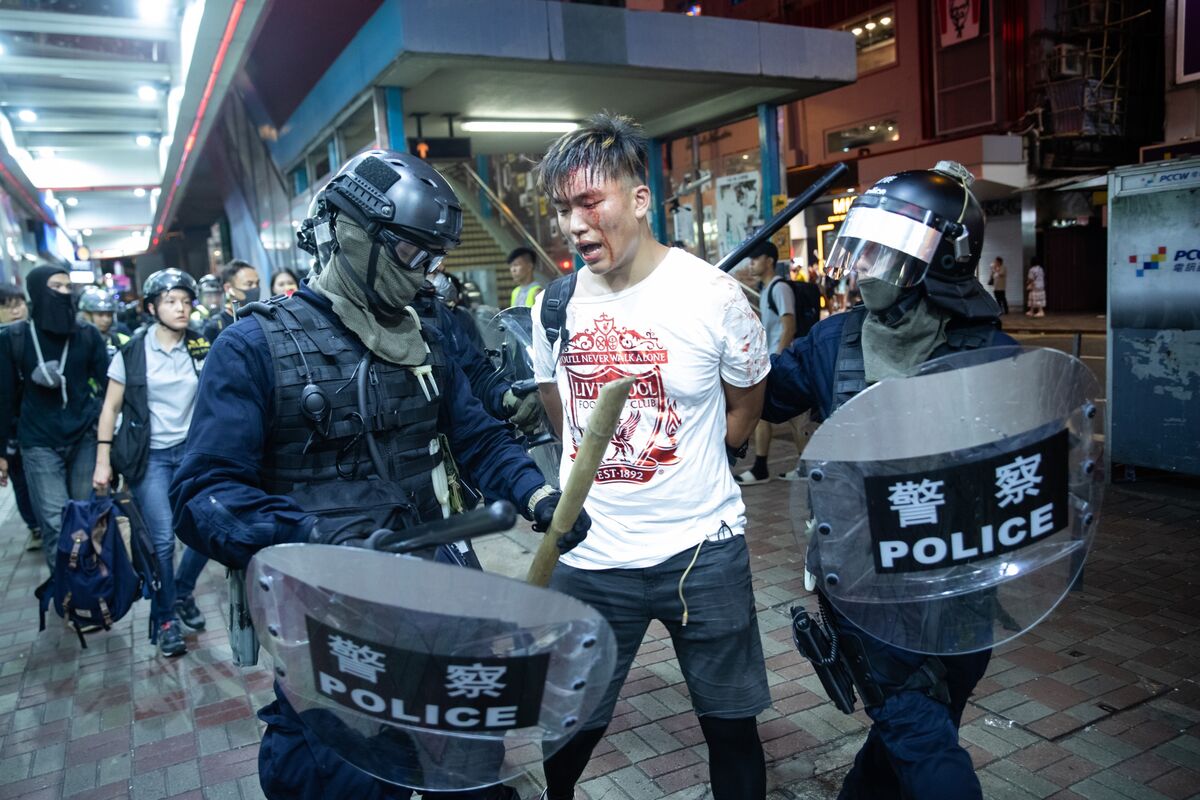
 www.bloomberg.com
www.bloomberg.com
The Trump administration placed eight Chinese technology giants on a U.S. blacklist on Monday, accusing them of being implicated in human rights violations against Muslim minorities in the country’s far-western region of Xinjiang.
The companies include two video surveillance companies -- Hangzhou Hikvision Digital Technology Co. and Zhejiang Dahua Technology Co. -- that by some accounts control as much as a third of the global market for video surveillance and have cameras all over the world.

U.S. Blacklists Eight Chinese Tech Companies on Rights Violations
The Trump administration placed eight Chinese technology giants on a U.S. blacklist on Monday, accusing them of being implicated in human rights violations against Muslim minorities in the country’s far-western region of Xinjiang.
Viimeksi muokattu:
US blacklists 28 Chinese organizations and companies over Xinjiang camps
Hong Kong (CNN Business)
Washington is adding 28 Chinese companies, government offices and security bureaus to a United States blacklist over their alleged role in facilitating human rights abuses in China's Xinjiang region.
Monday's announcement targets some of China's top artificial intelligence companies in a similar way to the US move against smartphone giant Huawei earlier this year, and comes just days before crucial trade talks between the two sides.
In a statement, the US Commerce Department said "these entities have been implicated in human rights violations and abuses in the implementation of China's campaign of repression, mass arbitrary detention, and high-technology surveillance against Uyghurs, Kazakhs, and other members of Muslim minority groups in [Xinjiang]."
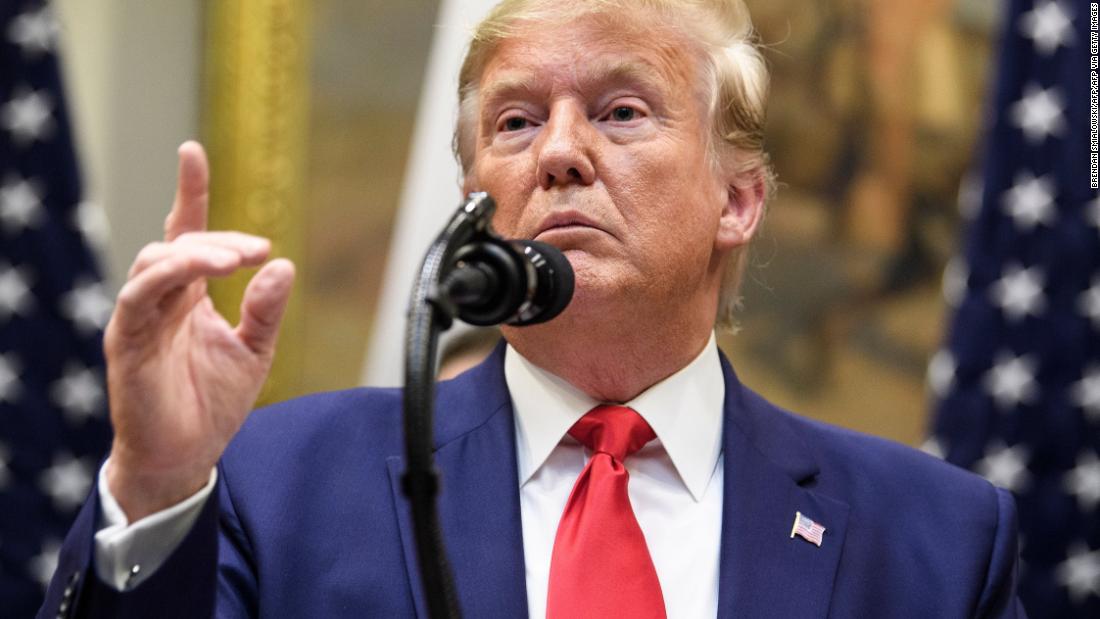
 edition.cnn.com
edition.cnn.com
Hong Kong (CNN Business)
Washington is adding 28 Chinese companies, government offices and security bureaus to a United States blacklist over their alleged role in facilitating human rights abuses in China's Xinjiang region.
Monday's announcement targets some of China's top artificial intelligence companies in a similar way to the US move against smartphone giant Huawei earlier this year, and comes just days before crucial trade talks between the two sides.
In a statement, the US Commerce Department said "these entities have been implicated in human rights violations and abuses in the implementation of China's campaign of repression, mass arbitrary detention, and high-technology surveillance against Uyghurs, Kazakhs, and other members of Muslim minority groups in [Xinjiang]."

US blacklists 28 Chinese organizations over Xinjiang camps
Washington is adding 28 Chinese companies, government offices and security bureaus to a United States blacklist over their alleged role in facilitating human rights abuses in China's Xinjiang region.
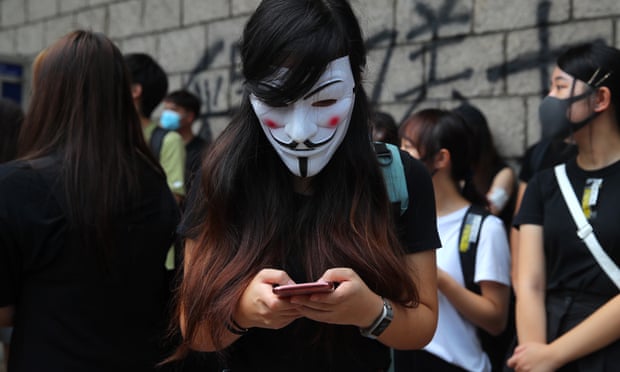
Meinasi unohtua se tärkein
https://www.theguardian.com/world/2...s-apple-over-app-that-tracks-hong-kong-policeChina’s state media has accused Apple of endorsing and protecting “rioters” in Hong Kong’s increasingly violent protests by listing an app on its app store that tracks the movement of police in the city.
The condemnation, by the People’s Daily, a Chinese Communist party mouthpiece, appears to be China’s latest move to pressure foreign companies to toe the line after its state TV and Chinese companies cancelled collaboration with the US National Basketball Association over comments by a team official in support of Hong Kong’s protests.
The app HKmap.live, which crowdsources the location of police and anti-government protesters, was approved by Apple on 4 October and went on its App Store a day later, after the company reversed an earlier decision to reject the submission, according to an anonymous developer cited in the South China Morning Post. The app displays hotspots on a map of the city that is continuously updated as users report incidents, hence allowing protesters to avoid police.
The headline of the People’s Daily commentary carried by its official microblog on Wednesday said: “Protecting rioters – Has Apple thought clearly about this?”
It went on to say: “Allowing the ‘poisonous’ app to flourish is a betrayal of the Chinese people’s feelings.”
Kyseinen sovellus https://hkmap.live/#
Viimeksi muokattu:
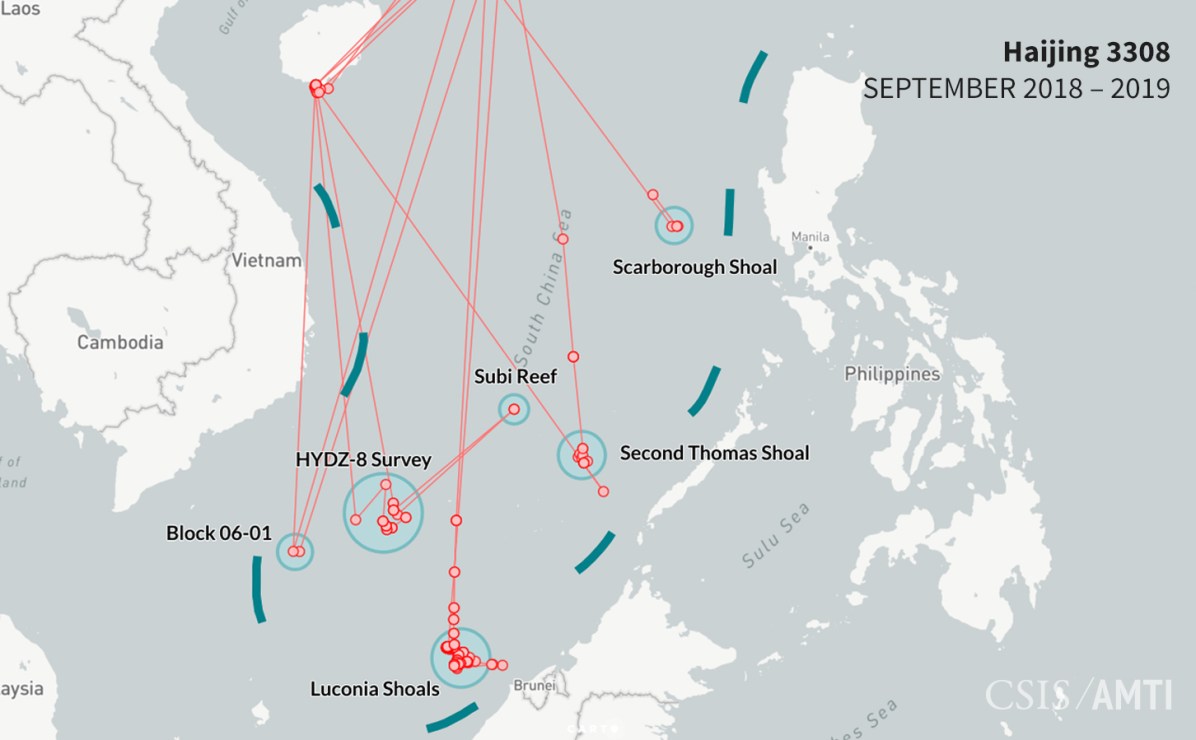
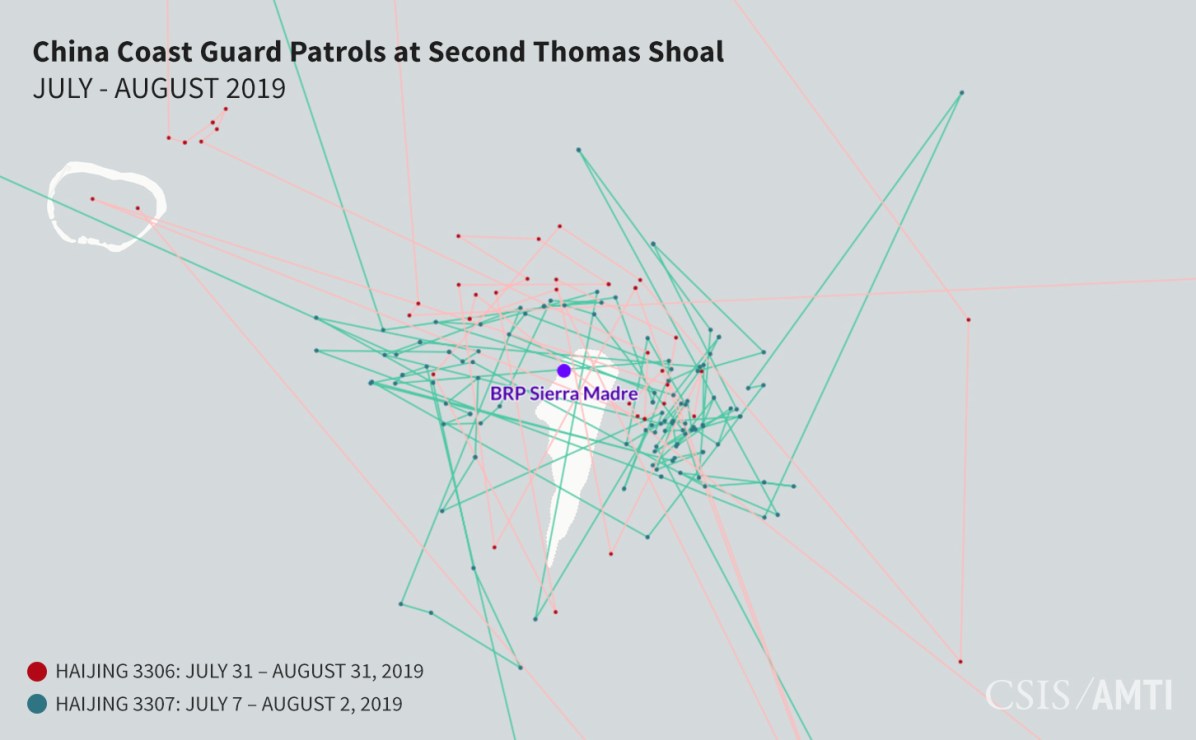
China Coast Guard (CCG) vessels have been harassing a drilling rig operating in a Vietnamese oil and gas block near Vanguard Bank, an underwater feature in the South China Sea, since June. Meanwhile, a large contingent of CCG ships have since July been escorting the Chinese state-owned survey ship Haiyang Dizhi 8 operating off the Vietnamese coast farther north. These actions have drawn attention to the CCG’s increasing role in asserting Chinese claims over seabed resources throughout the South China Sea. They also highlight how the CCG’s access to newly-built port facilities on artificial islands in the Spratlys allows it to sustain such deployments. But less appreciated is the persistent presence the CCG maintains around several symbolically important features in the South China Sea: Luconia Shoals, Second Thomas Shoal, and Scarborough Shoal.
AMTI has identified 14 CCG vessels broadcasting automatic identification system (AIS) signals while patrolling these features over the last year. These are just a subset of the CCG fleet operating in the South China Sea, and many others loiter at Chinese bases in the Paracels and Spratlys or patrol around the outposts of other claimants (such as Thitu Island).
Second Thomas Shoal is an entirely underwater reef less than 20 nautical miles from Mischief Reef, China’s largest outpost in the Spratlys. In response to China’s occupation of Mischief in 1994, the Philippines in 1999 intentionally grounded a World War II-era tank landing ship, the BRP Sierra Madre, on the reef. The ship has since served as a permanent outpost for a small contingent of Filipino troops, despite Chinese demands that it be removed. China increased its patrol presence near Second Thomas Shoal in May 2013 and blockaded the troops on the Sierra Madre for several weeks in March 2014. More recent harassment reports have included the buzzing of a Philippine resupply mission by a CCG helicopter in May 2018 and a report from the Philippine Department of National Defense that the Haijing 3305, another Shucha II-class vessel, blocked the route of three resupply vessels in May 2019.
https://amti.csis.org/signaling-sovereignty-chinese-patrols-at-contested-reefs/
En pysty muuta kuin arvaamaan kuin helvetillinen kalapaliikki siitä syntyisi jos naapurin rajavartion laivat ajaisivat meidän aluevesien läpi ja kävisivät hätyyttämässä meidän vehkeitä.
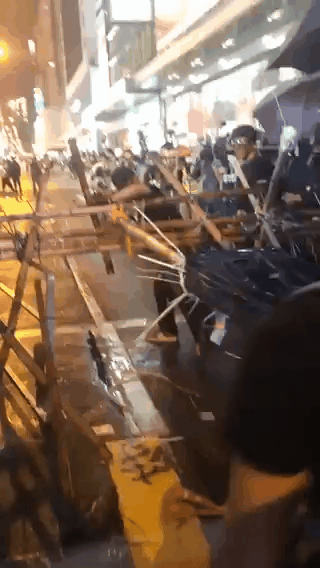
https://boingboing.net/2019/10/07/steampunk-hk-af.htmlThe Hong Kong Free Press identifies the builders of this brick-throwing manganel fashioned from torn-down bamboo scaffolding as Hong Kong protesters, who deployed their siege engine in Mong Kok, Kowloon, home to narrow streets and night markets. The Free Press says it was "removed shortly after."
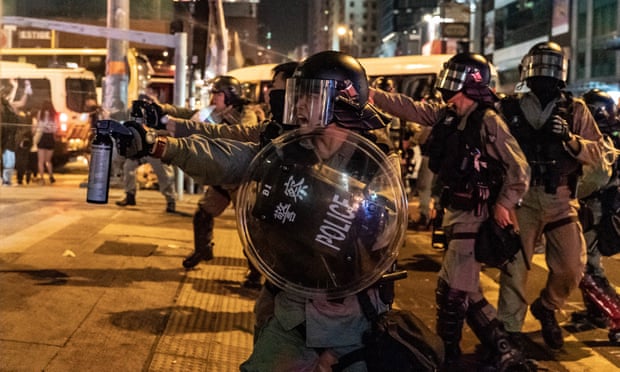
"Ruiskutusta kolmannella...."
https://www.theguardian.com/world/2...odies-says-xi-jinping-amid-hong-kong-protestsChinese president Xi Jinping has warned that any attempt to divide China will be crushed, as Beijing faces political challenges in months-long protests in Hong Kong and US criticism over its treatment of Muslim minority groups.
“Anyone attempting to split China in any part of the country will end in crushed bodies and shattered bones,” he told Nepal’s prime minister, KP Sharma Oli, in a meeting on Sunday, according to China’s state broadcaster CCTV.
“And any external forces backing such attempts dividing China will be deemed by the Chinese people as pipe-dreaming,” he was quoted as saying.
Chinese president Xi Jinping has warned that any attempt to divide China will be crushed, as Beijing faces political challenges in months-long protests in Hong Kong and US criticism over its treatment of Muslim minority groups.
“Anyone attempting to split China in any part of the country will end in crushed bodies and shattered bones,” he told Nepal’s prime minister, KP Sharma Oli, in a meeting on Sunday, according to China’s state broadcaster CCTV.
“And any external forces backing such attempts dividing China will be deemed by the Chinese people as pipe-dreaming,” he was quoted as saying.
Väkivaltaisuus lisääntyy ja konflikti kuumenee poliisiauton pommituksen jälkeen. Kuka oli tekijä?
https://www.theguardian.com/world/2...ints-at-further-measures-to-suppress-protestsHong Kong’s leader Carrie Lam has hinted at further measures to suppress the increasingly violent protests in the financial hub ahead of her annual policy speech, which will launch economic but not political measures in an attempt to douse widespread discontent.
Lam told a press briefing on Tuesday that the government will not condone the increasingly violent acts in recent weeks, which has seen activists hurling dozens of petrol bombs at police while others trashed metro stations as well as shops and banks seen as pro-Beijing. A home-made bomb was remotely detonated as a police car drove past on Sunday night and an officer also had his neck slashed by a protester.
Lam announced on 4 October that the government had invoked a colonial-era Emergency Regulations Ordinance – last used 52 years ago – to pass a regulation forbidding the use of face masks, bypassing the legislature. The move sparked widespread anger and has since prompted hundreds of thousands to don masks and take to the streets in defiance of the ban.
Kiinalainen kartta sisältää vähän ekstraa.
https://www.defenseone.com/ideas/20...-us-not-other-way-around/160646/?oref=d-riverFrom the late 19th century up to World War II, Americans were seized by the idea of transforming China into a Christian, capitalist America on the other side of the Pacific Ocean.
The word plastic pops up again and again in American statements about China from that era. China is “plastic” in the hands of “strong and capable Westerners,” announced President Woodrow Wilson in 1914. “China has become plastic after centuries of rigid conventionalism,”declared Selskar M. Gunn, a vice president of the Rockefeller Foundation, in May 1933.
But from the beginning, Americans were also afraid that China—or the Chinese—would change them, too. In 1870, following the Civil War, Congress limited naturalization to white people and black people. Later, the United States tried to inoculate itself against the influence of the Chinese by banning many of them from America’s shores. Starting with the Chinese Exclusion Act of 1882, the U.S. Congress passed a series of racist immigration laws which would not be significantly modified until World War II, when China was an ally in America’s fight against Japan. It looked bad for the U.S. to deny Chinese the right to travel in America while Chinese under American command were dying on Asian battlefields.
Then came the Cold War, and instead of changing China, Americans sought to quarantine it. Fear of China in the United States was at a fever pitch in the years following the Korean War as Chinese were portrayed in American films, magazines, and books as possessing magical powers to brainwash average Americans. U.S. economic and diplomatic sanctions on China were far more onerous than they were on the Soviet Union. After a while, the impracticability of such isolation became pretty obvious. Even Frank Sinatra weighed in during an interview with Playboy magazine in 1963, calling for “Red China” to be given a seat in the United Nations. “I don’t happen to think you can kick 800,000,000 Chinese under the rug and simply pretend that they don’t exist,” Sinatra declared.
https://yle.fi/uutiset/3-11025933Tummiin pukeutuvien hongkongilaisten mielenosoitukset jatkuvat nyt neljättä kuukautta.
Alun perin vankien luovutuslakia vastustaneet protestit ovat muuttuneet demokratiaa puolustaviksi.
Aiemmin tässä kuussa Kiina kielsi kasvot peittävien naamioiden käytön tukahduttaakseen mielenosoitukset.
Nyt se on kieltänyt mustien ja tummansinisten vaatteiden viennin Kiinasta Hong Kongiin, South China Morning Post -sanomalehti kertoo. (siirryt toiseen palveluun)
Lehti lainaa useiden kuriiriyhtiöiden edustajia, joiden mukaan Kiina on ohjeistanut tulliviranomaisia tarkastamaan Hong Kongiin menevät lähetykset mustien vaatteiden varalta.
Mielenosoittajat pukeutuvat säännöllisesti mustiin t-paitoihin, housuihin ja kenkiin. Myös heitä tukevat kansalaiset ovat pukeutuneet mustiin.
J0h1F
Respected Leader
Toisaalta Taiwan nyt ei ole varsinaisesti ekstraa: sekä Kiinan tasavalta (ROC, Taipeissa paossa oleva hallitus) että Kiinan kansantasavalta (PRC, Pekingin hallitus) ovat sitä mieltä, että Taiwan on Kiinaa.Kiinalainen kartta sisältää vähän ekstraa.
Tykkään hämmentää kiinalaisia muistuttamalla heitä siitä, että Taivan on varsinainen Kiina ja Kiinan kansantasvalta on vain sen levoton, vallankumouksen tilassa oleva parin maakunnan alue.Toisaalta Taiwan nyt ei ole varsinaisesti ekstraa: sekä Kiinan tasavalta (ROC, Taipeissa paossa oleva hallitus) että Kiinan kansantasavalta (PRC, Pekingin hallitus) ovat sitä mieltä, että Taiwan on Kiinaa.
Teräspappa luottaa vanhuksia kunnioittavaan kulttuuriin ja ryntää etulinjaan Hong kong.
https://yle.fi/uutiset/3-11032554Kiina suunnittelee Hongkongin hallintojohtajan Carrie Lamin syrjäyttämistä, uutisoi Financial Times (siirryt toiseen palveluun) (artikkeli maksumuurin takana). Lehti perustaa tietonsa asiaa tunteviin lähteisiin. Tähän asti Kiinan keskushallinto on antanut tukensa Lamille ja Hongkongin poliisille.
Lähteiden mukaan Kiina suunnittelee Lamin korvaamista väliaikaisella hallintojohtajalla.
Demokratiaa puolustavat mielenosoitukset ovat jatkuneet Hongkongissa lähes viisi kuukautta. Mielenosoittajat ovat syyttäneet Lamia Peking-mielisyydestä ja vaatineet tämän eroa.
Protestit ovat ajoittain yltyneet väkivaltaisiksi yhteenotoiksi. Kiina on tuominnut väkivallan jyrkästi ja kutsunut mielenosoittajia mellakoitsijoiksi.
Financial Timesin lähteiden mukaan Lamin syrjäyttäminen vaatisikin ensin mielenosoitusten rauhoittamista, koska Peking ei halua näyttää siltä, että se antaa periksi mielenosoittajille ja väkivallalle.
Jos Kiinan presidentti Xi Jinping aikoo edetä syrjäyttämissuunnitelman kanssa, Lamin seuraaja asetettaisiin maaliskuuhun mennessä ja tämä hoitaisi virkaa Lamin nykyisen kauden loppuun asti eli vuoteen 2022.
Lähteiden mukaan kärkiehdokkaiden joukossa ovat Hongkongin rahoitusviranomaisen entinen johtaja Norman Chan ja Henry Tang, joka on toiminut hallinnon eri tehtävissä.
Lamin edustajat eivät ole toistaiseksi kommentoineet uutista.
https://yle.fi/uutiset/3-11041123Hongkongin hallintojohtaja Carrie Lam arvioi, että alueen talous kutistuu tämän vuoden aikana. Kesäkuussa alkaneet mielenosoitukset ovat vaikuttaneet kielteisesti Hongkongin talouteen.
Lam luonnehti näkymiä ennätyksellisen synkiksi. Carrie Lam kommentoi taloutta viikottaisessa lehdistötilaisuudessaan. Etukäteen oli arvioitu, että hallintojohtaja Lam saattaisi jopa ilmoittaa erostaan, mutta Lam keskittyi talouskysymyksiin ja vakuutti, että hänellä on Kiinan keskusjohdon tuki.
Sanomalehti Financial Timesin mukaan (siirryt toiseen palveluun) Kiina on kuitenkin aikeissa siirtää Lam syrjään. Lehden tietojen mukaan Kiinan johto haluaa kuitenkin odottaa tilanteen rauhoittumista, koska se ei halua näyttää taipuvansa mielenosoitusten paineen alla.
https://www.theguardian.com/world/2...oliceman-its-not-for-us-to-deliver-punishment“Police should protect citizens, but instead, we’ve become a tool of the authorities for ‘stability maintenance’,” Yeung says, with a rueful smile. “Our top officials are hiding and we’ve become their shields.”
Animosity between police and citizens has grown to an alarming level as ever-increasing amounts of tear gas, rubber bullets, beatings and water cannon have been used to deal with the resentful crowds.
On 1 October, police fired a live round for the first time, injuring an 18-year-old in the chest. Three days later, a 14-year-old was shot in the thigh. In the past four months more than 2,700 arrests have been made.
“When we were in the academy, we were taught to use only the minimum amount of force. It’s not for us to deliver punishment,” he says. “But now, the majority of the police think the ‘rioters’ need to be punished … they attack people indiscriminately, even non-protesters.”
https://amti.csis.org/vietnams-need-to-become-a-proactive-middle-power/The most frequently-asked question from U.S. scholars and experts visiting Vietnam these days is, “What does Vietnam want from the United States when it comes to the South China Sea?” Given the rapid improvement of the U.S.-Vietnam Comprehensive Partnership, especially in defense and security cooperation, this question comes as a surprise to some Vietnamese strategists. But those who are more deeply involved in the process understand both the frustration behind the question and the obstacles in strategic thinking that Vietnam faces in trying to calibrate its position on the South China Sea. It is essential that Vietnam pushes to overcome these obstacles and maximize both its relationship with the United States and its own potential as a proactive middle power if it hopes to ever achieve a winning strategy to safeguard its maritime interests.
Chinese activity within Vietnam’s exclusive economic zone (EEZ) near Vanguard Bank has shown that Vietnam’s previous approach to dissuading China’s assertive behavior was unsuccessful, but also that Hanoi seems to have shifted gears in an encouraging direction. When news of the standoff broke, several observers quickly reached the conclusion that the Vietnamese leadership was “paralyzed” and “disoriented” in formulating a response, but these assessments overlooked the quiet resolve within what has clearly been a calculated response on Hanoi’s part. Vietnam started its own oil exploration in Block 06-01 five months ago, and has sustained the project ever since. Despite facing enormous pressure from Beijing, both on the diplomatic front and on a tactical level at sea, Hanoi has chosen not to back down, to continue issuing diplomatic protests, and to keep confrontation running as long as possible without escalating the situation to a breaking point.
This approach is different from in previous cases such as the 2014 standoff over China’s deployment of the Haiyan Shiyou-981 deepwater drilling rig, and it may prove more effective. Hanoi’s strategy rests on the idea that China may, in fact, find itself bogged down in the South China Sea—if Hanoi simply endures, Beijing cannot easily withdraw and declare victory. Earlier this month, China withdrew its survey vessel from Vietnamese waters after the drilling rig operating in Vietnam’s Block 06-01 near Vanguard Bank also left. It is still unclear whether the rig was forced to cease operations, or if it completed its work despite Chinese pressure. If the latter, then the standoff will have proven a costly and face-losing adventure for China. But Hanoi also understands that Vietnam cannot stand alone if it wants to protect its maritime rights and interests, and by drawing out the incident it has created time for sentiment to build against China and for regional and international actors to respond.
Unfortunately, the standoff near Vanguard Bank has thus far been regarded as a regional problem rather than a global one. The loneliness of Vietnam in its maritime dispute with China reflects the reality that its rebalancing strategy has not been as effective as expected, and that international support for its position is, and will continue to be, hard to come by. ASEAN states seem both weak individually and fractured as a group, while outside powers such as Japan, Australia, and India prefer to manage their own complicated relationships with Beijing without the added risk that might come from supporting ASEAN claimants in the South China Sea. The established power of the region, the United States, considers China to be its main strategic competitor, but continues to struggle internally to articulate a strategy to deal with China’s rise and its carefully administered coercive gradualism.
These dynamics underscore the need for Hanoi to adopt a bolder strategy if it ever hopes to tip the balance in the South China Sea. Recent discussions among many Vietnamese observers suggest that Hanoi should adjust its “three nos” policy by getting proactive about increasing military cooperation with other countries in the region. It is significant that these discussions have sprung up before the announcement of the Fourth National Defense White Paper at the end of this year. Whether or not the Vietnamese leadership will readjust the current approach on maritime security remains to be seen, but one thing is certain: they need to be more proactive, confident, and forward-thinking. In other words, Vietnam needs to behave like a true middle power.
Vietnamese leaders have been too cautious and indecisive to expand cooperation with the United States, fearing that deeper connection with Washington will make relations with Beijing more complicated. Economic interdependence and political alignment are always cited as excuses for avoiding what is deemed “excessive risk.” This indecisiveness has frustrated the decision-making process, which in turn has slowed down other major security initiatives such as naval modernization as well as the development of potential legal options to confront China’s claims. The relationships between civilian leaders and military advisors, and between government departments, lack cohesion and focus.
The conservatism of the military apparatus exacerbates the problem. Though many Vietnamese officers have been abroad to study new fighting tactics and strategies, several veteran officials have indicated in private conversations that these have not been adopted or integrated into combat training or strategic doctrine in any meaningful way. The structure of both the military and the defense industry are still based on the inefficient Soviet model in a new era where rapid modernization is required. Finally, it remains the prevailing assumption within the military that the West, and the United States in particular, is still engaging in “peaceful revolution” to topple the Communist Party. This strain of thought continues to be harmful to Vietnamese interests and limits the potential of the U.S.-Vietnam relationship.
The United States, for its part, must recognize that the “three nos” defense policy and the mentality of seeing both the United States and China as “Partners of Cooperation and Objects of Struggle” remain core principles of Vietnam’s foreign and defense policies. What can be done at the moment would be to assure Vietnamese leaders that the United States is a reliable and trusted partner, and to reduce the uncertainty in its policies toward the region and its foreign policy in general. The sudden withdrawal of U.S. troops from Syria and the unpredictability of the Trump administration’s foreign policy are only reinforcing the concerns Vietnamese conservatives have about investing in a deeper relationship with the United States.
https://www.theguardian.com/world/2...media-urges-tougher-stance-on-wanton-violenceChinese state media on Monday urged authorities to take a “tougher line” against protesters in Hong Kong who vandalised the office of the state-run Xinhua news agency and other buildings at the weekend, saying the violence damaged the city’s rule of law.
In an editorial, state-backed China Daily newspaper criticised the “wanton” attacks by “naive” demonstrators, adding: “They are doomed to fail simply because their violence will encounter the full weight of the law.”
It dismissed the attacks as “nothing more than adolescent hormones pumped up and primed by those willing to exploit them” and accused Hong Kong’s youth of venting anger at “at grievances real and imagined”.

